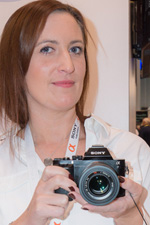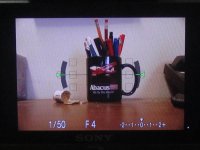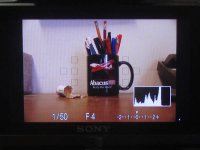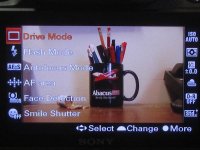Online Magazine
Recent Posts
- Safeguard your Cellphone Photos
- Black & White to Color – Instantly
- Wearing Many Hats
- Video Roundup
- Rescuing Your Blurry Pictures
- Showing Their Age
- What is Your Angle?
- Panorama Photos
- Humorous Photos
- Close Ups
- Fisheye Pictures
- Photo Antiquities
- Printing Big
- Appreciating Scale
- Celebrity Sightings
Tags
More Places to Go
- Free "How-To" Books “How To” books for popular cameras 0
- Vist Us on Facebook keep in touch with us on Facebook 2
Archives
- July 2023 (1)
- March 2023 (2)
- February 2023 (1)
- December 2022 (1)
- October 2022 (1)
- September 2022 (8)
- August 2022 (9)
- July 2022 (1)
- June 2022 (1)
- June 2021 (1)
- May 2021 (1)
- March 2021 (5)
- February 2021 (4)
- January 2021 (2)
- April 2019 (1)
- March 2019 (1)
- February 2019 (1)
- October 2018 (2)
- April 2018 (1)
- March 2018 (4)
- February 2018 (1)
- November 2017 (1)
- August 2017 (1)
- June 2017 (1)
- April 2017 (1)
- March 2017 (5)
- February 2017 (2)
- January 2017 (1)
- October 2016 (1)
- September 2016 (1)
- August 2016 (1)
- July 2016 (1)
- May 2016 (1)
- April 2016 (1)
- March 2016 (2)
- February 2016 (1)
- January 2016 (2)
- December 2015 (1)
- November 2015 (1)
- October 2015 (3)
- April 2015 (1)
- March 2015 (5)
- February 2015 (1)
- January 2015 (4)
- December 2014 (2)
- November 2014 (5)
- October 2014 (2)
- September 2014 (1)
- August 2014 (2)
- July 2014 (1)
- May 2014 (1)
- April 2014 (5)
- March 2014 (5)
- December 2013 (2)
- November 2013 (18)
- October 2013 (1)
- September 2013 (1)
- August 2013 (1)
- July 2013 (1)
- June 2013 (3)
- May 2013 (1)
- April 2013 (2)
- March 2013 (1)
- February 2013 (1)
- January 2013 (1)
- December 2012 (1)
- November 2012 (2)
- October 2012 (2)
- September 2012 (5)
- August 2012 (2)
- July 2012 (1)
- June 2012 (1)
- May 2012 (1)
- April 2012 (4)
- March 2012 (1)
- February 2012 (1)
- January 2012 (3)
- December 2011 (1)
- November 2011 (3)
- October 2011 (1)
- September 2011 (2)
- August 2011 (2)
- June 2011 (3)
- May 2011 (4)
- April 2011 (8)
- March 2011 (8)
- February 2011 (10)
- January 2011 (6)
- December 2010 (11)
- November 2010 (14)
- October 2010 (6)
- September 2010 (12)
- August 2010 (2)
- July 2010 (4)
- June 2010 (3)
- May 2010 (1)
- April 2010 (1)
- March 2010 (2)
- February 2010 (1)
- January 2010 (1)
- December 2009 (1)
- November 2009 (2)
- October 2009 (2)
- September 2009 (1)
- August 2009 (3)
- July 2009 (2)
- June 2009 (1)
- May 2009 (2)
- April 2009 (1)
- March 2009 (2)
- February 2009 (1)
- January 2009 (3)
PhotoPlus Expo – Sony a7
05th November 2013
Full Frame Mirrorless Interchangeable Lens Camera
At this year’s PhotoPlus Expo, I made it a point to visit Sony’s booth to have a quick hands on their newly announced Alpha 7 camera. But first, here’s a little background that may help to explain why I take such an interest in the a7.
In 2010, Sony introduced the Alpha A55 with its unique translucent mirror. The non-movable mirror enables Sony to pack many innovative features into a space-saving SLT body that are missing from conventional DLSR cameras – accurate and continuous autofocus, real time electronic viewfinder, sweep panorama, multi-frame noise reduction, more. Since then I’ve been a user of two models – the A55 and a more advanced A65. Both produce excellent images. And since they are considerably smaller and lighter than the competitor’s equivalent models, they are less burdensome in the field.
These two SLTs cultivated my fondness for lightweight equipment. So I was very intrigued when I learned about Sony’s NEX series of compact camera. With an APS-C sensor, a NEX camera body is half the size of a DLSR yet accommodates interchangeable lenses owing to its mirrorless design. I soon acquired a lower-end NEX 5 to see if it met my requirements. I found it has image quality but I was not comfortable using the LCD finder with longer lenses. I then purchased the NEX 7 that sports an electronic viewfinder. Since then this has been my camera of choice owing to its excellent image quality, innovative feature set, compact lens size in an extremely lightweight package.
|
|
||
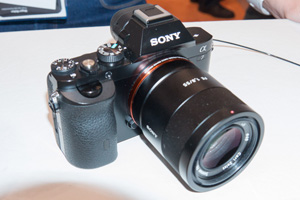 the a7 with Carl Zeiss 55mm f/1.8 lens attached |
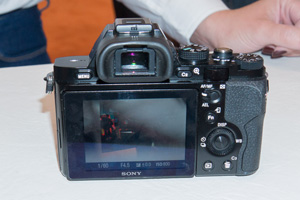 dedicated mode and exposure compensation dials |
|
|
|
||
I am impressed with the small size of the a7. With the 28-70mm lens attached, the package is amazingly small and lightweight. While I wasn’t able to examine my test shots in detail, I’m confident that the full-frame sensor will delivery excellent images. In fact, I understand that Sony supplies this same sensor for use in Nikon’s D600 full frame DSLR.
So I remain in a quandary. Should I move from my very comfortable NEX 7 to this new full-frame a7?
Written by: Arnie Lee
Sony Alpha A55 – Review Part 2
14th March 2011
Unique Features of the Sony Alpha A55
The Sony Alpha A55 has a long list of features – some of which you may find in a few other cameras and others that are unique only to the A55. But taken together they they make the A55 a very compelling piece of equipment.
In Part 1, I talked about the “standard” features of the A55.
In this part of the review, I’ll key in on several of these features that are both unique and innovative.
The first three features are possible because of the A55’s translucent mirror.
Electronic Viewfinder

